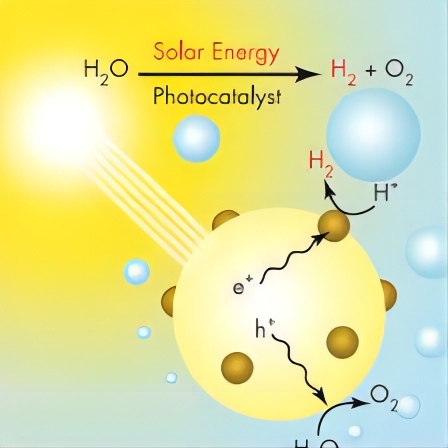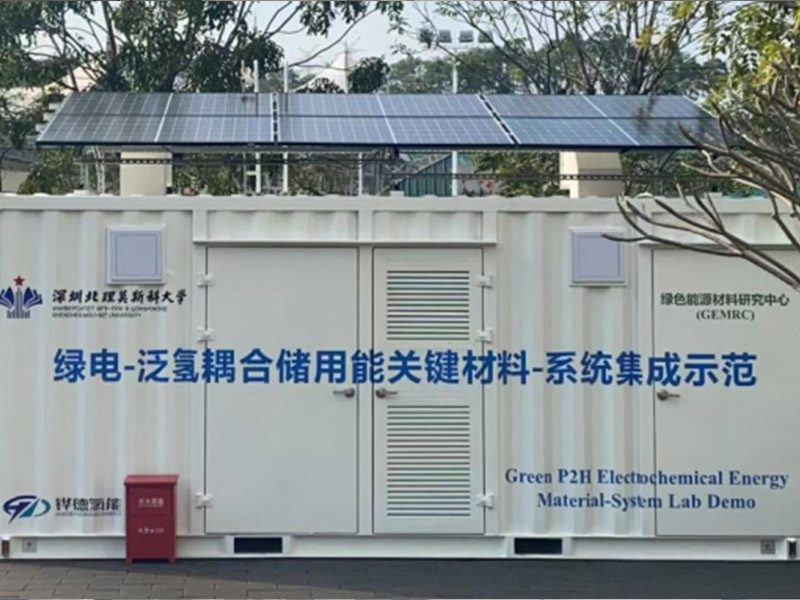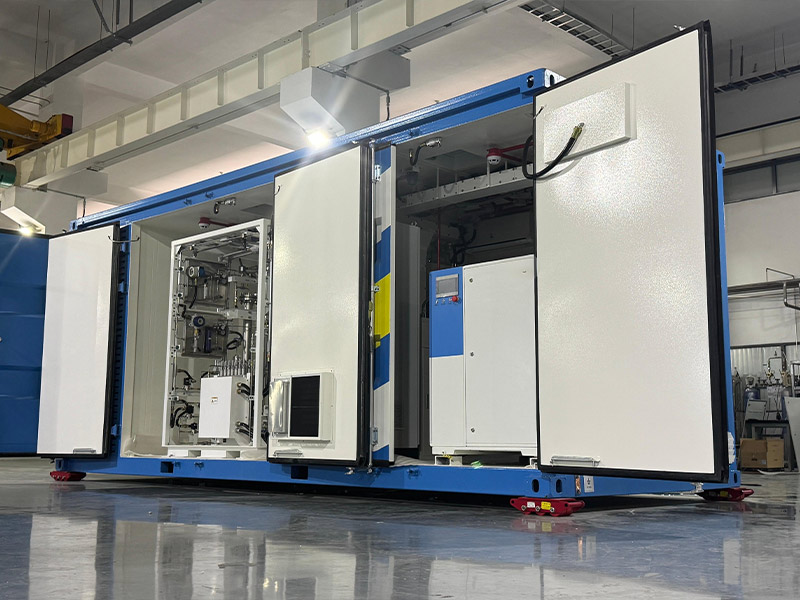Keypoints
l Solar hydrogen is produced through electrolysis powered by solar panels, splitting water into clean hydrogen fuel and oxygen with zero emissions.
l This technology provides long-term energy storage that outperforms batteries, capable of preserving solar energy for months without degradation.
l Solar hydrogen systems can power homes, industries and transportation while producing only water vapor as a byproduct.
l Current challenges include high equipment costs and energy conversion losses, though prices are dropping as technology advances.
l With its ability to store renewable energy and replace fossil fuels, solar hydrogen plays a crucial role in achieving carbon-neutral energy systems.
Solar hydrogen is hydrogen gas produced using solar energy through a process called electrolysis. Unlike conventional hydrogen production methods that rely on fossil fuels, solar hydrogen is completely green and emission-free.

Solar Energy Collection: Photovoltaic panels convert sunlight into electricity
Water Electrolysis: This electricity powers a device called an electrolyzer that splits water (H₂O) into:
Hydrogen (H₂)
Oxygen (O₂)
Storage & Use: The hydrogen gas is compressed and stored for later use in:
Fuel cells to generate electricity
Industrial processes
Transportation fuel
Here are the main steps in producing solar hydrogen:
The process starts with solar panels capturing energy from the sun. These panels convert sunlight into electricity using photovoltaic (PV) technology. This electricity becomes the clean, renewable power source needed for the next step.
The electricity from the solar panels is used to split water (H₂O) into hydrogen (H₂) and oxygen (O₂) through a process called electrolysis. This is done using a device called an electrolyzer. The hydrogen gas is collected for storage, while the oxygen is safely released into the air.
Once produced, the hydrogen is stored in tanks—either as compressed gas or in other safe forms. This stored hydrogen acts as a kind of energy battery, ready to be used whenever needed, whether it’s nighttime, cloudy, or during a power outage.
When clean energy is needed, the stored hydrogen is sent to a fuel cell or hydrogen-powered generator. There, it reacts with oxygen to create electricity and heat. The only byproduct is clean water vapor, making the entire process emission-free and environmentally friendly.
Solar hydrogen solves two major renewable energy challenges:
l Energy Storage: Stores excess solar power for use when the sun isn't shining
l Clean Fuel: Provides a carbon-free alternative to fossil fuels
✔ Zero emissions - Only byproduct is water
✔ Renewable - Uses abundant sunlight and water
✔ Versatile - Can power vehicles, industries and homes
✔ Storable - Energy can be kept for long periods
Solar hydrogen system come in various types, each tailored to different needs and environments. Direct PV-to-Hydrogen systems use solar panels to power electrolyzers directly, making them simple and efficient for off-grid or remote locations.
Grid-Connected Systems offer flexibility by integrating with the power grid—using solar electricity for hydrogen production during the day and drawing grid power when sunlight is limited.
For maximum efficiency, Hybrid Solar-Thermal systems combine photovoltaic and thermal energy to enhance electrolysis or even use heat directly in thermochemical hydrogen production. Each type serves unique use cases, from residential setups to large-scale industrial operations.
In this system, solar panels (photovoltaics or PV) are directly connected to an electrolyzer. The electricity produced by the panels goes straight into splitting water into hydrogen and oxygen. This method is simple, clean, and ideal for standalone systems that don’t need to connect to the power grid.
Best for: Off-grid homes, small-scale hydrogen production, remote areas.
These systems are linked to the main power grid. During the day, solar panels generate electricity. Some of it is used for electrolysis, while excess power can be sent to the grid. If solar energy isn’t available, electricity from the grid can be used to continue hydrogen production.
Best for: Urban areas, commercial buildings, places with changing sunlight availability.
This advanced system combines solar photovoltaic panels with solar thermal technology. While PV panels produce electricity, thermal collectors capture heat from the sun. The combined energy increases the efficiency of electrolysis or is used in other parts of the hydrogen system. Some systems even use heat directly to produce hydrogen through thermochemical methods.
Best for: Industrial use, locations with high solar radiation, and projects focused on maximum efficiency.
While promising, solar hydrogen still faces hurdles:
Electrolyzers—the machines that split water into hydrogen and oxygen—are still expensive to build and maintain. Although prices are gradually dropping, the initial investment can be a barrier for many households and small businesses. Mass production and innovation are expected to reduce costs over time.
Turning sunlight into electricity, then electricity into hydrogen, and later back into electricity through a fuel cell, involves energy losses at each step. These losses make the overall system less efficient compared to direct electricity use. However, the ability to store energy for later use still makes hydrogen valuable.
Hydrogen needs special storage tanks and pipelines, which many places don’t yet have. Building this infrastructure takes time and money. Without a proper delivery system, it’s difficult to scale up solar hydrogen for widespread use in cities, transportation, or industry.
Producing hydrogen through electrolysis requires clean water. In dry areas where water is already scarce, this can be a concern. Researchers are working on solutions like seawater electrolysis and water recycling to reduce this challenge and make hydrogen production more sustainable in all climates.
Solar hydrogen brings together two of the planet’s most abundant resources—sunlight and water—to create clean, storable energy. It offers a powerful solution to some of today’s biggest energy challenges, from reducing carbon emissions to storing renewable power for when we need it most.
While there are still obstacles to overcome—like cost, efficiency, and infrastructure—the potential is too great to ignore. As technology improves and awareness grows, solar hydrogen is becoming more practical and more accessible.
For households, businesses, and communities looking for cleaner, smarter energy options, solar hydrogen is not just a dream for the future—it’s a real and growing part of today’s energy landscape. And with every step forward, we move closer to a world where clean power is as natural as sunshine and as essential as the air we breathe.
Is solar hydrogen the same as green hydrogen?
Yes. Green hydrogen is produced using renewable energy, and solar hydrogen is one way to produce it.
Can I use solar hydrogen in my home?
Yes, especially if you're off-grid or looking for long-term energy storage, though initial setup costs can be high.
How safe is solar hydrogen?
Modern hydrogen systems come with multiple safety features such as leak detection and automatic shutoff.
Does solar hydrogen help reduce carbon emissions?
Absolutely. It is a zero-emission energy solution when produced using solar power.
Will solar hydrogen become mainstream?
Many experts believe so, especially with ongoing improvements in technology and government support.


